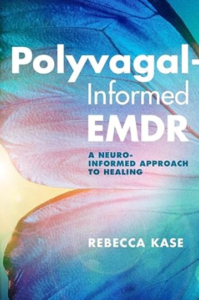Psychological therapy for functional neurological disorder: Examining impact on dissociation, psychological distress and general functioning (Journal of Trauma and Dissociation)
This study explored the dissociative profile of patients with functional neurological disorder (FND) and evaluated whether individual psychological therapy improved dissociative symptoms, psychological distress and general functioning.
Read MoreVisual EMDR stimulation mitigates acute varied stress effects on morphology of hippocampal neurons in male Wistar rats (Frontiers in Psychiatry)
This study looked at “the potential of EMDR as a neuroprotective intervention in mitigating stress-related hippocampal alterations.”
Read MoreEye movement intervention facilitates concurrent perception and memory processing (Cerebral Cortex)
This article utilized EEG scans to look at neural activity during eye movements and suggested information facilitation is important in EMDR therapy.
Read MoreEye-movement desensitization and reprocessing (Routledge, 2024)
This chapter illustrates similarities in EMDR and memory reconsolidation, in Unlocking the emotional brain: Memory reconsolidation and the psychotherapy of transformational change.
Read MoreEMDR: dispelling the false memory creation myth in response to Otgaar et al. (2022a) (Frontiers in Psychology)
This paper examines an article by Otgaar et al. (2022a) which claims that psychotherapy can induce false memories of trauma.
Read MoreAutonomic nervous system function before and after trauma-focused psychotherapy in youth with (partial) posttraumatic stress disorder (Psychoneuroendocrinology)
This article looks at the correlation between trauma-focused psychotherapy including EMDR therapy and alterations in the autonomic nervous system (ANS) in children and adolescents aged 8-18.
Read MoreDNA methylation changes in association with trauma-focused psychotherapy efficacy in treatment-resistant depression patients: A prospective longitudinal study (European Journal of Psychotraumatology)
This article looks at the effects of trauma-focused psychotherapy on DNA methylation alterations.
Read MoreThe integrative process promoted by EMDR in dissociative disorders: Neurobiological mechanisms, psychometric tools, and intervention efficacy on the psychological impact of COVID19 pandemic (Frontiers in Psychology)
Structural dissociation of personality theory & polyvagal theory in conceptualization of COVID-19 pandemic-triggered dissociative disorder.
Read MorePolyvagal-informed EMDR: A neuro-informed approach to healing (Norton, 2023)
This is the first book to present the integration of Polyvagal Theory and EMDR Therapy together.
Read MoreHow does EMDR work in the brain? The neuroscience of EMDR with Professor Paul Miller at Mirabilis (Mirabilis Health Institute)
This video dives into the inner workings of EMDR therapy and how it’s used to help process traumatic memories and alleviate PTSD symptoms.
Read More




